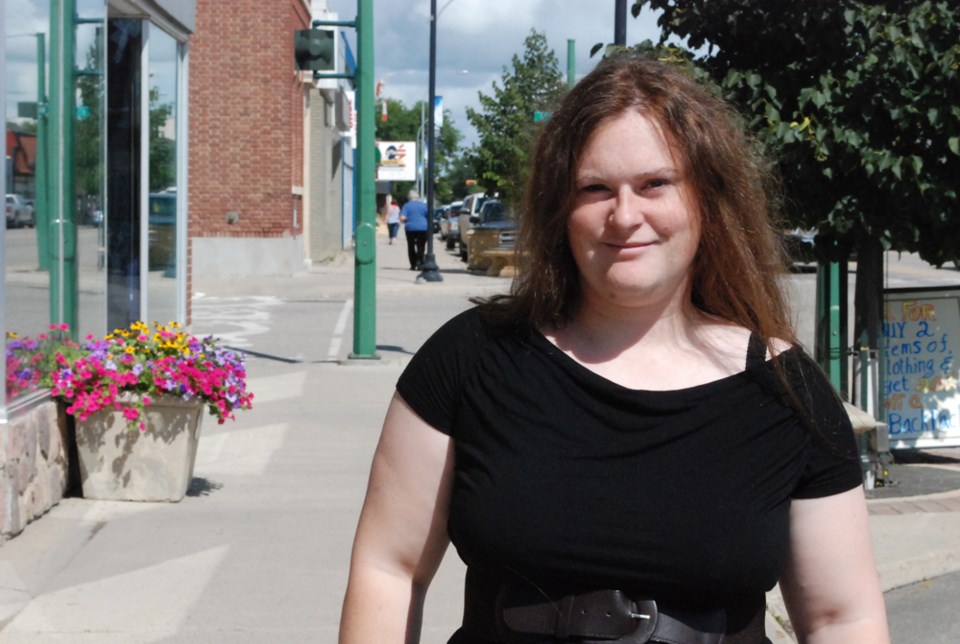On Jun. 9, men of Humboldt walked a mile in red high heel shoes in support of ending domestic violence.
And the numbers are scary.
In 2013, Saskatchewan’s rate of domestic violence was 30 per cent higher than any other province.
For every 100,000 people, the assault rates were 410.3.
For the total population of Saskatchewan in 2013, that means there were 4,401 domestic violence cases that year, according to Statistics Canada.
Saskatchewan also saw a shift in the types of violence in 2013.
Physical violence; which totalled 4,097 cases, had decreased by nine per cent while sexual violence, which totalled 304 cases, had gone up six per cent.
According to a Globe and Mail article on Canadian sexual assault laws, only 50 per cent of sexual assaults in Canada ever result in charges laid and an estimated 90 per cent of sexual assaults go unreported.
When it comes to supporting domestic and sexual assault survivors, what are we doing to protect them?
Rural support is severely lacking when it comes to centres. We have nine 24 hour sexual assault support lines across the province, 15 transition houses, and 8 support centres, all of which are in bigger centres which makes getting the support into rural areas more difficult.
Jo-Anne Dusel with Provincial Association of Transition Houses and Services of Saskatchewan says that there are no more than 15-20 beds on average for the transition houses in Saskatchewan.
That means that there are between 225-300 available across the province.
Statistics Canada does not make a distinction between urban and rural survivors in their 2013 report but before Dusel’s work with Transition Houses and Services, she worked in the transition house in Moose Jaw.
Half their clients came from rural areas.
“It’s very common for women to relocate away from their home community for safety reasons,” says Dusel.
We think we know what is going on but I remember Deborah Bryson-Sarauer commenting at the PARTNER’s 15th Anniversary that rural abuse is easy to hide in a small town.
She was even part of a study that looked at the reasons behind this while she was a Mental Health Therapist with the Central Plains Health District.
Of course on a personal basis these people do not support assault but stigma towards assault survivors do not help on the road to making survivors feel safe.
There are many comments made online and in person when it comes to stigma.
“What if the woman is lying about being sexually assaulted?”
Historically, between 2-4 per cent of sexual assault claims are false.
So why are we automatically assuming the victims are the guilty ones?
“What about men who get raped?”
This one came up a lot during the #yesallwomen movement on Twitter.
I could not say this any better than two poets out of Los Angeles, Belissa Escobedo and Rhiannon McGavin, who spoke about their own experiences with being raped at a slam poetry event:
“Men like to use the excuse, ‘boys get raped, too’ when they hear women talking about their personal experiences.‘Boys get raped’ should be its own sentence.
If you’re only acknowledging their trauma to silence female survivors, then you’re a scumbag.”
When it comes to percentages, in a variety of assault causes, whether they be physical or sexual, women predominately are the ones on the survivor side.
But sex of the survivor should not be the most important factor in an assault case.
This is the problem with stigmas. Men who come forward are perceived as weak while women who come forward are perceived as liars.
We need to be making a culture that is supportive of all assault survivors, whether they are male or female.
If someone cannot think of a reason to help stop domestic violence and sexual assault, besides the obvious human cost of trauma, a University of Saskatchewan Nursing student put a financial cost on domestic violence.
In June 2016, the Circle Project Association out of Regina with assistance from the student analyzed the cost of domestic violence.
The study took one hypothetical case where a female and one child were assaulted by a male perpetrator and calculated the medical, legal, support, and lost employment costs of the incident, including the affects on the two other children who were not involved in the attack.
The total of this one incident totaled $112,536.
Domestic violence is not isolated to just affecting the survivors and perpetrators, but affects people within the family and community, reports the study.
“The causes are very complex. Given that violence occurs in an escalating cycle, the likelihood of an instance like this re-occurring within this family is high and places the entire family at future risk.”
The study outlines the cost of this single incident in detail with monetary values down to the dollar.
But this goes beyond the monetary.
Watching a Youtube video where a man berates a complete stranger for dressing “promiscuously” going so far as use colourful language to describe her character just based on what she is wearing, it gives me some hope in humanity to see people step up and confront him on it.
Hearing about the Brock Turner case out of the United States, I am glad to see people stepping up and letting it be known that this is not okay.
Rehtaeh Parsons’ family in Nova Scotia went so far as to spurn the publication ban so they could go into schools and speak about her experience with rape and mental health.
Prevention and raising awareness are important factors in breaking this cycle of domestic violence.
The most important thing we can do for survivors is let them know, no matter what their sex, that they have support.




